Step into the enchanting world of Hmong cuisine and embark on a culinary journey like no other. In this article, we will explore the captivating experience of making traditional Hmong food with the locals.
From the first encounter with vibrant markets brimming with fresh ingredients to the warm and inviting kitchens where time-honored recipes come to life, this culture promises to be a truly remarkable adventure.
Get ready to discover the rich flavors, unique ingredients, and ancient cooking techniques that define Hmong cuisine.
So, join us as we unravel the secrets of this extraordinary culinary heritage, and prepare to tantalize your taste buds with the tantalizing flavors of Hmong traditional food.
Good To Know
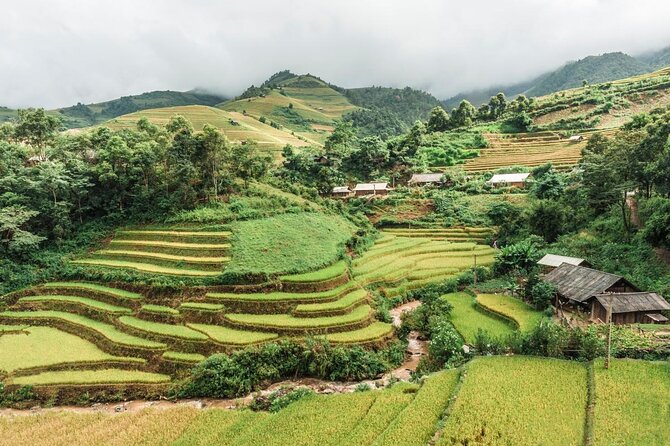
- Traditional Hmong food preservation techniques, such as drying, fermenting, pickling, and smoking, extend the shelf life of ingredients and enhance the flavors of Hmong dishes.
- Culinary traditions and rituals play a significant role in Hmong food preparation, with cooking often being a communal activity and food becoming a means of preserving cultural identity.
- Key ingredients in Hmong cuisine include fresh herbs and vegetables like lemongrass, cilantro, and bok choy, as well as spices like turmeric, ginger, and chili peppers, and locally sourced meats like pork, chicken, and fish.
- Learning traditional Hmong cooking techniques is essential to truly understand Hmong cuisine, as these techniques reflect the lifestyle, beliefs, and values of the Hmong community and are passed down through generations.
Traditional Hmong Food: A Cultural Delight

Traditional Hmong food offers a captivating journey into the cultural richness and culinary heritage of the Hmong people. One of the key aspects of Hmong cuisine is their food preservation techniques. With a history of being an agrarian society, the Hmong developed various methods to preserve their food, ensuring their sustenance during times of scarcity. These techniques include drying, fermenting, pickling, and smoking, which not only extend the shelf life of ingredients but also enhance their flavors.
Along With their preservation techniques, Hmong culinary traditions and rituals play a significant role in their food preparation. Cooking is often a communal activity, bringing together family and friends. Traditional feasts, such as the Hmong New Year celebration, showcase the cultural significance of food in Hmong society.
Through these culinary traditions and rituals, Hmong food becomes not just sustenance but a means of preserving their cultural identity.
Find more activities and experiences we've covered in Sapa.
Exploring the Local Ingredients
Exploring the local ingredients reveals a vibrant array of fresh produce and unique flavors that are integral to Hmong cuisine. When visiting the local markets, you will be greeted by a feast for the senses.
Here are three key elements that make Hmong ingredients truly special:
Fresh Herbs and Vegetables: The Hmong people have a deep appreciation for the natural world, which is reflected in their use of fresh herbs and vegetables. From fragrant lemongrass to vibrant cilantro and the crisp crunch of bok choy, these ingredients add depth and complexity to Hmong dishes.
Exotic Spices: Traditional Hmong cuisine incorporates a variety of spices that add warmth and depth of flavor. Turmeric, ginger, and chili peppers are just a few examples of the spices that bring a tantalizing kick to Hmong dishes.
Locally Sourced Meats: The Hmong people rely on locally sourced meats, such as pork, chicken, and fish, to create hearty and satisfying dishes. These meats are often cooked using traditional methods, such as grilling or stewing, to enhance their natural flavors.
Learning Traditional Hmong Cooking Techniques
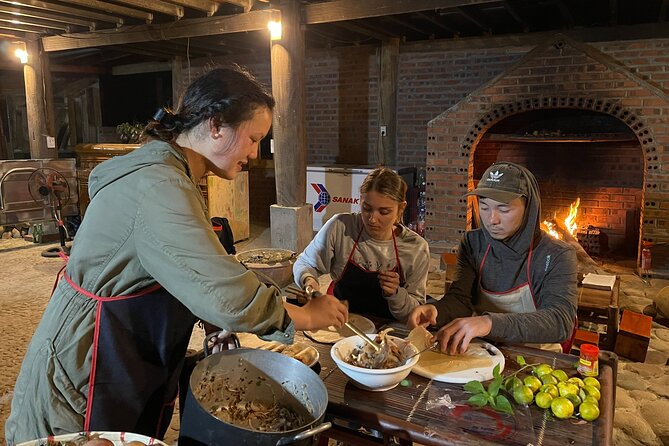
To truly learn about the art of Hmong cuisine, it is essential to learn the traditional cooking techniques passed down through generations. Exploring Hmong culinary traditions is not just about the ingredients, but also about the methods and skills that have been honed over time.
These techniques are deeply rooted in the cultural significance of Hmong cuisine, reflecting the lifestyle, beliefs, and values of the community. Learning these techniques allows you to appreciate the intricacies of Hmong cooking, from the precise cutting of ingredients to the meticulous process of creating flavorful sauces and broths.
It is through mastering these techniques that you can truly embody the spirit of Hmong cooking and carry on the legacy of this rich culinary tradition.
Hands-On Experience: Making Hmong Dishes
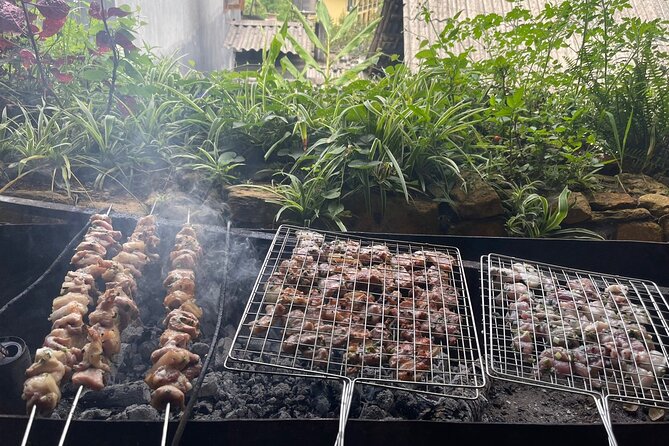
During this immersive culinary experience, you will have the opportunity to engage in a hands-on exploration of Hmong cuisine by actively preparing and cooking traditional Hmong dishes. This unique experience goes beyond just learning recipes; it allows participants to truly enjoy the Hmong culture and gain a deeper understanding of the traditional cooking methods used by the Hmong people.
Here are three reasons why this hands-on experience is a must-try:
Cultural Immersion: By actively participating in the preparation and cooking process, you will gain a deeper appreciation for the Hmong culture. They will learn about the significance of each ingredient, the traditional cooking techniques, and the importance of food in Hmong celebrations and daily life.
Authentic Learning: Participants will learn directly from Hmong locals who have inherited the culinary traditions from their ancestors. They will receive expert guidance and insider tips, ensuring an authentic and enriching learning experience.
Delicious Results: Not only will participants learn how to make traditional Hmong dishes, but they will also get to taste the fruits of their labor. From fragrant herbs and spices to hearty stews and vibrant stir-fries, you will savor the delicious flavors of Hmong cuisine that they helped create.
Enjoying a Homemade Hmong Feast
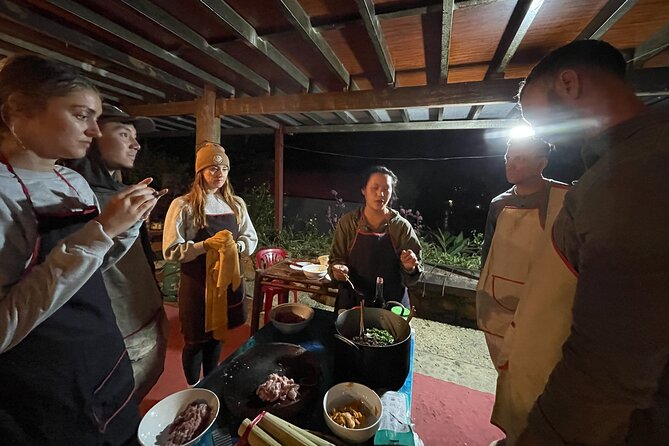
Indulge in the flavors of homemade Hmong cuisine during a delightful feast that showcases the rich traditions and culinary expertise of the Hmong people.
Taking in the Hmong culinary traditions, you will have the opportunity to discover the flavors of Hmong cuisine like never before. Each dish is carefully prepared using traditional methods and ingredients, resulting in a culinary experience that is both authentic and unforgettable.
From fragrant herbs and spices to unique combinations of meats and vegetables, Hmong cuisine offers a diverse range of flavors that will tantalize your taste buds. As you savor each bite, you will not only be enjoying a delicious meal, but also gaining a deeper understanding and appreciation for the Hmong culture and their culinary heritage.
Get ready to embark on a gastronomic adventure like no other as you feast on the delectable creations of the Hmong people.
Common Questions
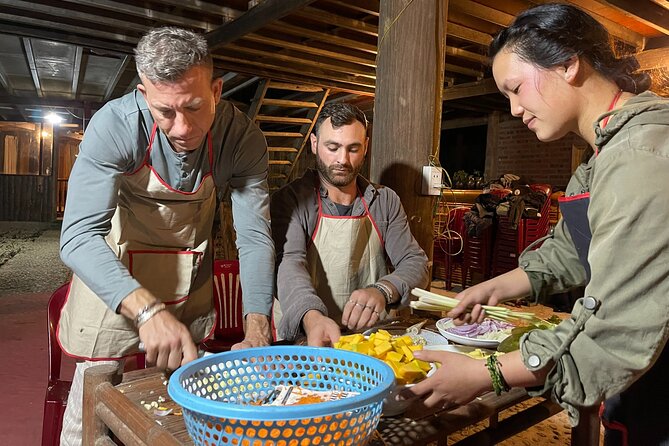
Are There Any Dietary Restrictions or Preferences That Can Be Accommodated During the Hands-On Cooking Experience?
We strive to accommodate dietary restrictions and preferences during our hands-on cooking experience. Whether you have specific dietary needs or are seeking vegetarian options, our knowledgeable staff will ensure a delightful culinary experience for all participants.
Can Participants Take Home Any Leftovers or Recipes From the Cooking Class?
Participants in the cooking class have the opportunity to take home any leftovers from the dishes they prepare. Plus, the locals are happy to share their traditional recipes with the participants, allowing them to recreate the experience at home.
Is Transportation Provided to and From the Cooking Class Location?
Transportation to and from the cooking class location is provided for participants. It is important to note any dietary restrictions in advance to ensure a tailored experience.
Are There Any Age Restrictions for Participating in the Cooking Class?
There are no age restrictions for participating in the cooking class. However, it is recommended to inform the organizers in advance about any dietary preferences or restrictions to ensure a tailored experience.
Can Participants Request Specific Traditional Hmong Dishes to Be Included in the Feast?
Participants in the cooking class have the opportunity to request specific traditional Hmong dishes to be included in the feast. This allows for a personalized culinary experience and also highlights the cultural significance of the food.
The Sum Up
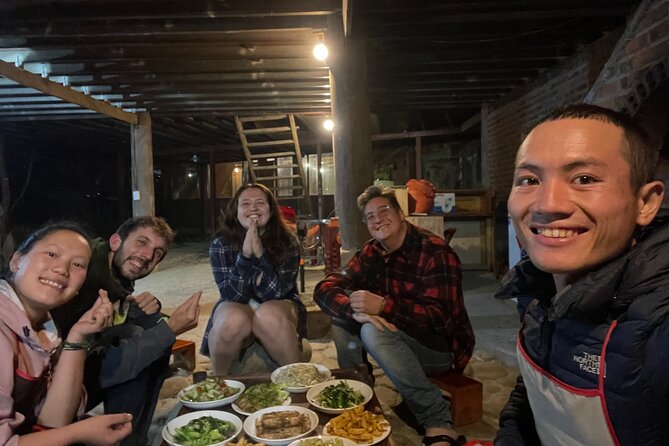
To sum it up, immersing oneself in the rich culinary traditions of the Hmong people offers a truly remarkable cultural experience. From sourcing fresh ingredients at vibrant markets to learning time-honored recipes in warm kitchens, this journey allows for a comprehensive understanding of Hmong traditional food.
By joining the locals in preserving their culinary heritage, one gains insight into the cultural significance of each dish and the stories behind them. Set out on a culinary adventure and discover the secrets of Hmong cuisine with the locals as your expert guides.
More Tour Reviews in Sapa
- 3 Days Sapa Trekking – Homestay & Hotel
- Full-Day Private Mountain and Villages Trek From Sapa Tour
- From Sapa: Visit Taphin Redzao Village – Half Day Private Tour
- Sapa Half Day Tour From Topas: Lech Dao Village
- Private 2 Days Trekking Tour From Sapa ( Hotel Overnight)
- From SAPA: Ha Giang Loop Motorbike Tour 4 Days 3 Nights
Looking for something different? Other Sapa activities we've written about
- 18 Best Guided Tours In Sapa
- 25 Best Tours In Sapa
- 4 Best Workshops And Classes In Sapa
- 20 Best 3 Day Tours In Sapa
- 20 Best Full-Day Tours In Sapa
- 5 Best Shopping Tours In Sapa
- 11 Best 4 Day Tours In Sapa
- 6 Best Private Driver Services In Sapa
- 20 Best 2 Day Tours In Sapa
- 10 Best Guided Tours In Sapa
- 2 Best Spa And Hot Springs Experiences In Sapa
- 2 Best Private Car With Driver Services in Sapa
